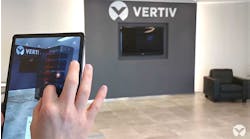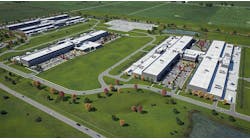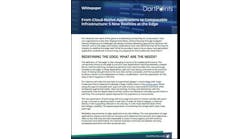Whatever form they may take, metaverse technologies are bound to be resource-intensive applications, requiring significant network and compute resources.
We asked our Data Center Frontier Executive Roundtable panel of experts to put on their futurist hats and explore what the metaverse might mean for digital infrastructure. Our panelists include Heather Dooley of Infrastructure Masons, Data Aire’s Eric Jensen, Kevin Facinelli of Nortek Data Center Cooling, Aligned’s Tim Shaheen, Phillip Marangella of EdgeConneX, and Tim Mirick from Sabey Data Centers. The conversation is moderated by Rich Miller, the founder and editor of Data Center Frontier. Here’s today’s discussion:
Data Center Frontier: What might increased adoption of “metaverse” virtual worlds mean for digital infrastructure and the data center industry?
HEATHER DOOLEY, Infrastructure Masons and HDCManagement.
Heather Dooley, Infrastructure Masons: It’s a paradigm shift, so there is a lot of potential and risk to unpack in these early days. The potential is huge, with some estimates coming in at trillions of dollars in revenue. I think it will be about sector adoption. It’s not just gaming, but also medical practice, education, business and potential industrial applications.
What’s unclear is if it will be platform-based or an ecosystem of meta suppliers across those sectors, or maybe both? Regardless, the proliferation of data is enormous and will undoubtedly increase demand for distributed compute.
TIM MIRICK, Sabey Data Centers
Tim Mirick, Sabey Data Centers: As envisioned by the tech giants, a “metaverse” will require a massive platform and could ultimately be a significant driver of colocation leasing. New capacity requirements will arise as this latest example of the tech industry’s innovation creates another global ecosystem of applications and uses.
Applications supporting a “metaverse” world would likely have similar requirements as today’s modern platforms: dense compute, massive storage, varying latencies. Some applications will require proximity to dense population centers, while others may reside in lower-cost rural facilities.
PHILLIP MARANGELLA, EdgeConneX
Phillip Marangella, EdgeConneX: In a recent article I wrote in Data Center Frontier I talked about how the metaverse can’t thrive without the physical universe. The infrastructure to support a concept as bold as the Metaverse cannot be limited to a small number of physical locations. It needs to be extensive even as it needs to feel local and exhibit ultra-low latency.
The Metaverse may very well revolutionize how people socialize, how they transact business, how they share knowledge and experiences, how they travel, and much, much more. But if it can’t be available to everyone everywhere, if it causes damage to the planet, or if it can’t deliver a smooth, seamless user experience, it will not thrive.
TIM SHAHEEN, Aligned
Tim Shaheen, Aligned: All digital and virtual capabilities are rooted in physical infrastructure, so increased adoption of Metaverse will inevitably mean more data centers.
It will also mean an increased focus on enhancing network connectivity, reducing latency, additional power allocation, more efficient data center cooling, and above all – scalability and the ability to expand on demand.
RICK CRUTCHLEY of Iron Mountain.
Rick Crutchley, Iron Mountain Data Centers: This really comes down to the experience of the end user. It’s no different than when we’re talking about streaming or gaming.
It’s about having content distribution network and connectivity options available in conjunction with edge data centers so you can improve the experience.
For infrastructure and data centers, the content distribution networks and connectivity options and ecosystem play a critical role as data needs to be served to the end user with low latency connections.
KEVIN FACINELLI, Nortek Data Center Cooling
Kevin Facinelli, Nortek Data Center Cooling: As environments become more immersive, realistic and virtual, the demand on information is going to grow exponentially. The metaverse will allow people to interact with other individuals and assets more holistically. This requires more data, which in turn generates more heat. The data center industry doesn’t know the future of the metaverse, but they can predictably assume they’ll need sustainable, future-proof liquid cooling technology.
ERIC JENSEN, Data Aire
Eric Jensen, Data Aire : The concept of meta verses exponentially grows the digital world by adding layers. Latency becomes even more precious, increasing demand at the edge, amongst telcos, but also for enterprises.
NEXT: A recap of all the themes and insights from our Data Center Executive Roundtable for the Fourth Quarter.
Keep pace with the fact-moving world of data centers and cloud computing by following us on Twitter and Facebook, connecting with DCF on LinkedIn, and signing up for our weekly newspaper using the form below:







